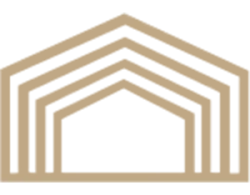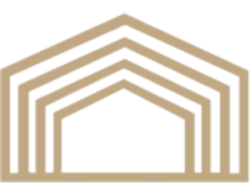Steel structure design principles refer to the basic principles that should be followed in designing steel structure buildings. The most basic tenets are safety and reliability, which means that the structural design must ensure the stability and strength of the structure under the specified working load. In addition, the economy and aesthetics of the system also need to be considered.
Comprehensive structural analysis and calculations are required during the design process to ensure the structure can withstand the necessary loads and external forces, such as seismic forces. Relevant steel structure design codes and standards also need to be followed. Steel structure design requires advanced design tools and technologies, such as computer-aided design software and three-dimensional modeling technology, to improve design efficiency and accuracy.
|
Table of Contents |
1. The Methods for Steel Structure Design
1.1. Plastic design method
The plastic design method is commonly employed in the internal force analysis of steel structure components when their plastic properties and strength exceed the standard load multiplied by a designated safety factor. This design approach offers significant advantages, particularly its ability to redistribute internal forces once the structure enters the plastic stage. However, it is crucial to ensure that the structure and its components exhibit sufficient ductility. Additionally, during the design of the steel structure, careful consideration must be given to the proportional dimensions of the flange and the web of the cross-section. These dimensions must be strictly adhered to based on the specific requirements of the design, ensuring optimal performance and safety.
1.2. Allowable stress method
The allowable stress method is another critical approach in the design of steel structures. This method mandates that the calculated stress of structural components must remain below the allowable stress defined for each component. When designing, it is essential to adhere to the specified standard load to accurately determine the stress levels. The calculations typically rely on first-order elastic theory, considering limit stress or yield stress with a safety factor exceeding one. Despite its widespread use, this design method has certain limitations and drawbacks. Therefore, it is vital to conduct a thorough assessment and select the most appropriate design strategy based on the unique conditions of each project.
1.3. Limit state method
The limit state method has emerged as a robust solution to address the shortcomings of both the plastic design and allowable stress methods, significantly enhancing the overall quality of steel structure design. This method employs load partial factors and resistance factors instead of relying on a single safety factor, offering a more nuanced approach. Under varying loads, structures can experience two critical limit states over their service life: the serviceability limit state, which pertains to regular usage, and the ultimate limit state, which relates to the structure's load-bearing capacity. The ultimate limit state focuses on structural safety, primarily concerning potential damage resulting from fractures and plastic deformations. Currently, the limit state method stands as the most widely adopted design approach in steel structure engineering. Its ability to improve design quality and ensure structural stability makes it an invaluable tool in modern construction practices.
2. Steel Structure Design
2.1. Load for Steel Structure Design
Steel structure load is the external force and other factors that cause internal pressure and deformation of the structure or component. Or various direct effects exerted on the steel structure building to produce the impact on the system or parts. Common ones include structural self-weight, floor live load, roof live load, roof area dust load, vehicle load, crane load, equipment dynamic load, and Wind, snow, ice, waves, and other natural loads.
2.1.1. Loads mainly include the following types:
Dead load: The dead load is a type of permanent load whose value does not change with time, or its change cannot be ignored compared with the average value. It includes structure self-weight, earth pressure, prestress, foundation settlement, concrete shrinkage, welding deformation, etc. When designing a structure, its long-term effects must be considered, such as its weight, the weight of permanent load-bearing, non-load-bearing structural and building decoration components, earth pressure, etc.
Live load: Live load, or variable load, is the use or occupation load and naturally occurring natural load imposed on the structure caused by people, materials, and vehicles, such as steel structure building floor live load, roof live load, roof area ash load, vehicle load, crane load, etc.
Wind load: Wind load, also known as wind dynamic pressure, is the pressure produced by air flow on engineering structures. Wind load is related to essential wind pressure, topography, ground roughness, height from the ground, and building shape.
Snow load: Snow load refers to the snow pressure acting on the top surface of a building or structure for calculation. Snow load is formed by snow accumulation and is a spontaneous meteorological load. The size of the snow load value mainly depends on the amount of snowfall in each region based on meteorological data, the roof form, the geometric size of the building, and the regular use of the building.
Seismic load: Seismic load is also called seismic force. A general term for the inertial force, earth pressure, and water pressure a structure experiences due to an earthquake. Since horizontal vibration has the most significant impact on buildings, only horizontal vibration is generally considered.
2.1.2. Calculation formula of seismic force: seismic force = self-weight × seismic coefficient
In terms of building weight, steel structures are lighter in weight than concrete structures. The self-weight of steel structures is generally about two-thirds or one-half of that of steel-concrete systems. According to the above calculation rules, a lightweight steel structure building will significantly reduce and mitigate seismic forces, thereby protecting the stability of the entire building.
The purpose of load analysis is to ensure that the building can operate safely under various external force factors and that no structural damage or collapse will occur, even in extreme situations. It can also help designers choose appropriate steel materials for design.
2.2. Structural stability for steel structure design
A steel structure’s stability coefficient (also called buckling coefficient) refers to the ratio of the maximum load a component can withstand when subjected to external forces relative to the ultimate load. Generally speaking, the higher the stability coefficient, the better the stability of the element. Here are some critical structural stability considerations:
2.2.1. Cross-sectional shape
The cross-sectional shape is one of the essential factors affecting the stability coefficient. According to the stability theory, the stability coefficient of a beam is related to its cross-sectional moment of inertia. In steel structures, common cross-sectional shapes include rectangles, circles, T-shape, H-shape, and tubular shapes. Each cross-sectional shape has a different cross-sectional moment of inertia, so the magnitude of the influence on the stability coefficient is also different.
2.2.2. Material strength
Another factor that affects the stability factor is the strength of the material. Specifically, the stability coefficient in steel structures is related to the yield strength of the component material. The higher the power, the higher the stability coefficient, and vice versa.
2.2.3. Cross-sectional dimensions
Section size also affects the stability factor. In steel structures, when the cross-sectional dimension of the component is small, the stability coefficient is relatively low because it is easy to cause local buckling. On the contrary, when the cross-section size is more extensive, it is more difficult for the component to undergo local buckling, so the stability coefficient is relatively high.
2.2.4. Member length
The length of the member is also an essential factor affecting the stability coefficient. According to Euler’s formula, the stability coefficient is high when the member length is small. Still, the stability coefficient will decrease sharply when the member length increases to a certain extent. Therefore, in steel structures, the size of components should be reasonably designed according to the actual situation to ensure the stability coefficient requirements.
2.3. Design principles for structural stability
2.3.1. The stability of the overall building structure needs to be considered
In architectural design, we usually first consider the plane layout of the building, such as the frame design on the architectural drawings. But to ensure the facility will not collapse, we must reasonably arrange the support system in the steel structure design. This means that the plane design of the building must be consistent with the three-dimensional structure of the building, taking into account not only the plane’s stability but also the building’s foundation stability.
2.3.2. The calculation drawings must be consistent with the actual calculations.
In the design of multi-story or high-rise buildings, data calculations are usually performed using frame structures rather than starting from the stability of the steel structure. In actual calculations, we need to use the coefficients of the virtual frame columns to ensure the overall strength of the steel structure. To meet the stability of steel structure design, we need to set specific calculation templates, which can be used in subsequent calculations to obtain reliable data.
2.3.3. The stability calculation of the steel structure must be consistent with the internal details.
We must ensure consistent structural design and calculation results when performing specific data calculations. In addition to the main frame structure calculations, we also need to pay attention to the details of the steel structure, such as the bending capacity of the connection points and the eccentricity of the rods. These details are equally important.
2.4. Aesthetic for Steel Structure Design
Beyond the fundamental principles of load stability and functionality, aesthetic design plays a crucial role in the creation of steel structures. Aesthetics in architecture significantly influences how a building is perceived, making it a key consideration for designers.
The appearance of a building forms the initial impression it conveys to the public. Elements such as the building’s shape, proportions, and overall design contribute to its visual appeal and can enhance or detract from its presence in the environment. Choosing appropriate materials, particularly in steel structure design, not only impacts the building's durability and performance but also its aesthetic quality. The sleekness and versatility of steel can lend a modern and sophisticated look, while also allowing for innovative design possibilities.
Natural light and visibility are other vital factors that architects must consider. A well-designed building should harmoniously integrate with its surroundings, maximizing natural light and offering pleasant views. This integration enhances the occupant's experience, promoting a more enjoyable and uplifting living or working environment. Additionally, thoughtful placement of windows and open spaces can create a dynamic interplay of light and shadow, further enriching the building’s aesthetic appeal.
Cultural and historical context also play a significant role in aesthetic design. Different regions around the world boast unique cultural heritages and architectural styles. Designers must be attuned to the local architectural vernacular, ensuring that their steel structures reflect and respect the surrounding community's character. This cultural sensitivity fosters a sense of belonging and continuity, allowing new constructions to integrate seamlessly into the local landscape.
In conclusion
Steel structure design needs to take stability as the core content, comprehensively consider existing resources and factors, reasonably plan the steel structure drawings, and handle each structure and frame well to avoid problems and enhance the stability effect. The local cultural and historical background must also be considered to create safe, durable, and impressive architectural works.


